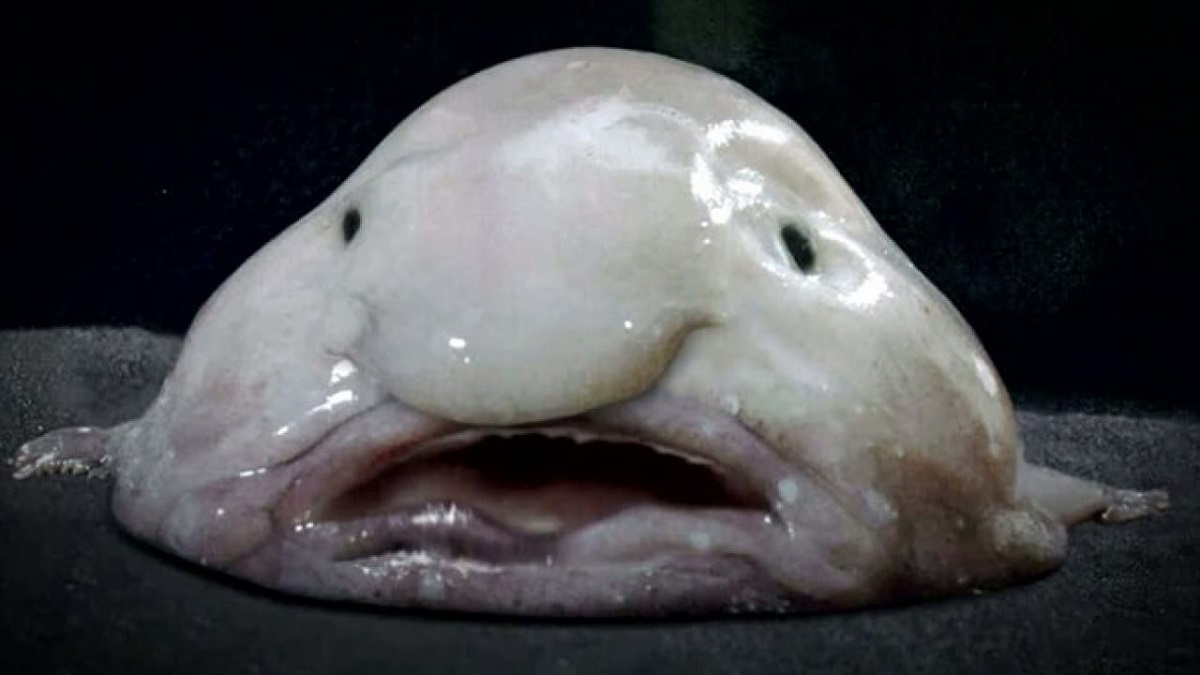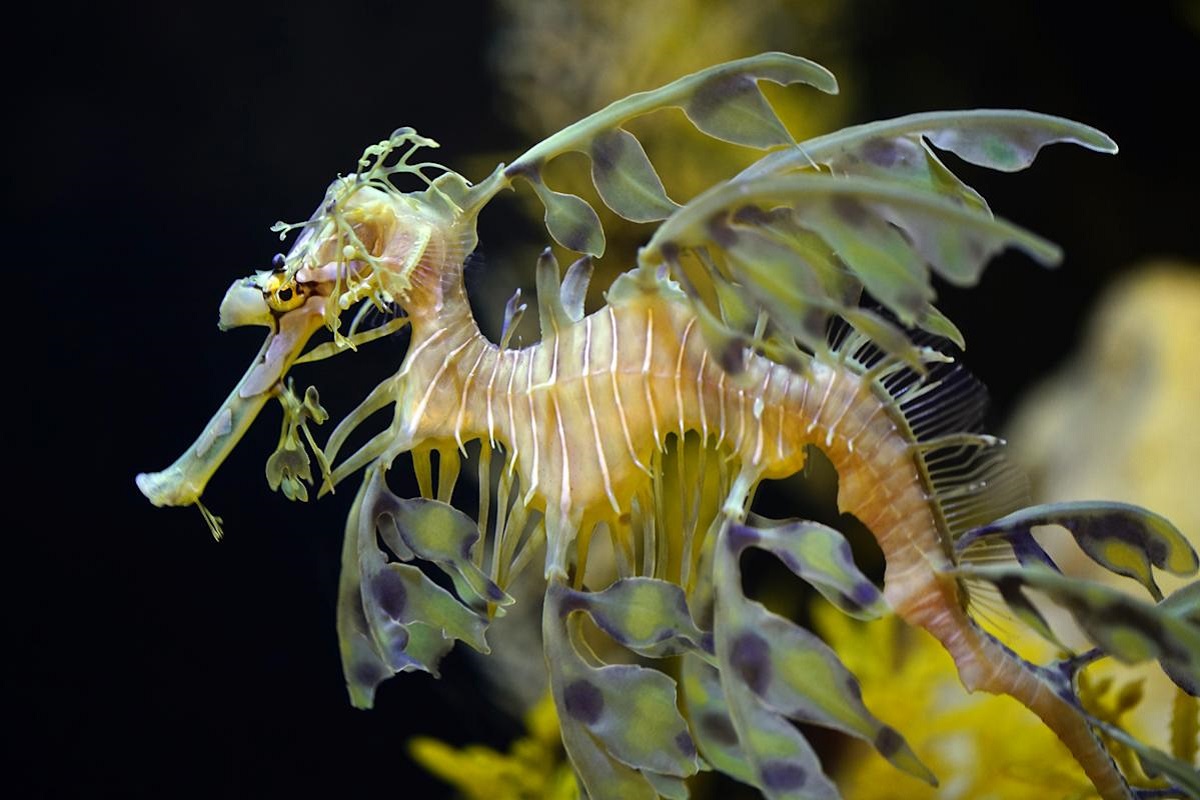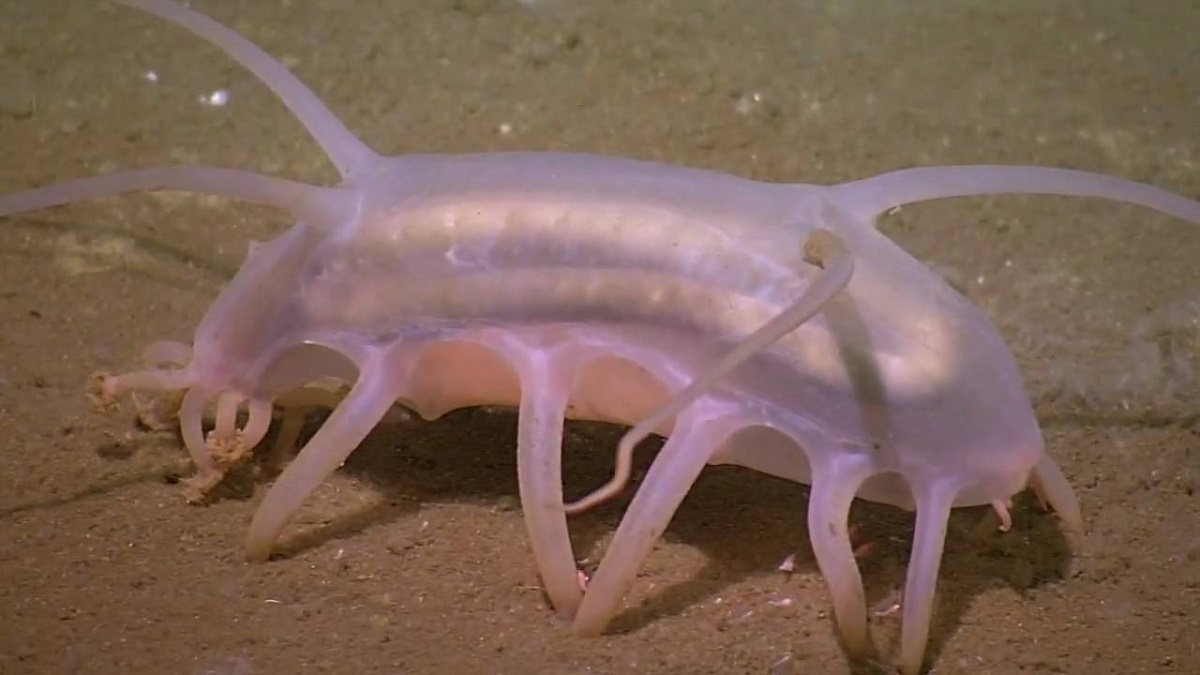
With more than 70% of our planet covered by water, its abysses and depths have not been fully explored. Because animals have to adapt to different conditions in the depths there are numerous species with very strange appearances. The rare animals in the sea They are usually the ones that live deepest.
In this article we are going to tell you about the rare animals in the sea and their characteristics.
frilled shark
Also known as the eel shark or chlamys, the frilled shark is one of the oldest species as it still retains some of its original characteristics. It is dark brown in color and can grow up to 4 meters long with dorsal, pelvic and anal fins.
They get their name from the frills around their gill slits, and typically feed on cephalopods, other sharks, and some fish. In addition, their hunting strategy is similar to that of snakes, since they bend their bodies and pounce on their prey. Its habitat in the Atlantic and the Pacific is very irregular.
Psychrolutes micropores
This is undoubtedly one of the strangest marine animals. In fact, few people know that its gelatinous appearance it is because this fish lives at a depth of about 1000 meters in the ocean, where the pressure is much higher, so its body density is less, so it can float on the seabed water, its actions consume almost no energy.
On the other hand, the speckled fish, as this friendly animal is also nicknamed, lives in areas of New Zealand and Australia, although it is almost unknown due to its inaccessible habitat.
arothron meleagris
This beautiful speckled goldfish is Arothron meleagris and belongs to the Tetraodontidae family of the Tetraodontiformes order. Its head is blunt, its nose is short, and its teeth are very large. It can grow up to 65 cm long and has dorsal and anal fins., as well as a long and round caudal fin.
Another oddity is that when the animal is in danger, it absorbs water by inflating its body into a large ball to put more pressure on the predator. Its distribution ranges from East Africa to Easter Island, especially in tropical climates in coral reef areas.
Yeti crab among the rare animals in the sea
Known scientifically as Kiwa Hirsuta, the crab is a crustacean that was recently discovered in 2005 in hydrothermal vents. at a depth of 2.300 meters near Easter Island.
It ranges in size from 15 cm long, is blind, white in color, and covered in filamentous filaments covered in bacteria. While the function of these bacteria is not fully understood, it is believed that they prevent crabs from being poisoned by toxic substances in the surrounding minerals.
Sea Dragon

It is a kind of sea dragon, and its appearance is the most elegant in the ocean. Their distribution includes the east and south coasts of Australia and they are in danger of extinction. Like many other animals, they try to blend in with their surroundings, which is why their bodies appear to be made of algae.
Dumbo octopus

Its resemblance to the mythical flying elephant makes Grimpoteuthis belong to the genus of cephalopod molluscs of the Octopod order, more popular under the name of Dumbo octopus. The animal has flippers on its head that are propelled while swimming and flies like Walt Disney's elephant.
It can reach a size of 20 centimeters and lives in areas ranging from 3.000 to 5.000 meters deep in the oceans of the Philippines, New Zealand, Australia and Papua.
Ax fish
Another of the most fearsome marine animals in the Atlantic or Pacific Ocean is the hatchet fish. The animal lives at depths greater than 600 meters and its size oscillates around 15 centimeters.
Argyropelecus gigas has some interesting features that help it adapt to the seabed, and that is its ability to become nearly invisible. Its dark color allows it to blend in perfectly, and its fluorescent organ glows, reproducing reflections similar to those seen when one looks at the surface of the water while submerged.
In this way, the hatchet fish takes advantage of this great advantage by making itself invisible to its prey and stalking upwards until it detects prey to devour due to the contrast of light.
Frog fish
The frogfish, scientifically known as Halobatrachus didactylus, is the only species in the genus Halobatrachus, a marine fish in the family Ranaidae, found along the Atlantic coast of Africa and the western Mediterranean.
Its presence makes it part of the strangest marine creatures. Found in the warm waters of Indonesia, this species walks the bottom of the sea in search of food, hiding among sponges and corals. The toad's name is appropriate: due to its shape, semicircular body, thick mouth and position in the sand when it pounces on its prey. Numerous hair-like branches sprout from the yellow body. It often varies greatly in size.
sea pig

The sea pig, better known in English as seapig, lives at the bottom of the sea and feeds on mud. It belongs to the family Oxynotidae. It is a small shark that lives in the Mediterranean Sea, does not usually exceed 150 cm in length. This species is difficult to spot or fish because it is found in very deep seabeds (it can survive to depths of 800 meters). Scientists have yet to figure out how it manages to survive in these conditions. It looks like an inflated balloon about to burst, similar to a normal pink pig.
hagfish
The hagfish or hybrid fish (Myxini) is a genus of jawless fish that includes a single order, Myxiniformes, a single family Myxinidae, and about 60 current species.
It is probably the most unpleasant of all sea creatures, mainly because of the sludge it produces. They don't have chins. Instead, it has two horizontally moving structures that it uses to catch prey. It feeds on the guts of larger animals and sometimes enters live specimens to eat them.
I hope that with this information you can learn more about rare animals in the sea and their characteristics.